I’ve been a huge fan of Sarah Raven since I first discovered one of her books at my local library in the very early days of my flower farming journey. At the time, I was looking for any information I could find on selecting the best varieties for cutting, growing super long-stemmed blooms, and germinating a handful of difficult-to-grow flowers. From the first moment I opened her book, I was mesmerized. Sarah’s books, award-winning website, products, and videos continue to inspire me today. Even after 15 years of collecting flower books, I still count Grow Your Own Cut Flowers as one of my very favorites.
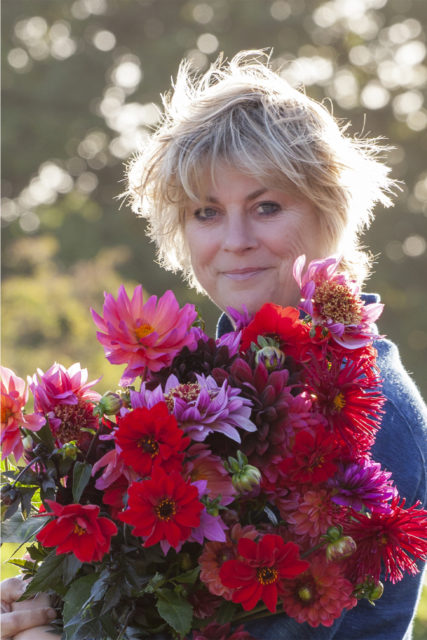 In addition to authoring more than a dozen flower- and food-focused books, Sarah teaches cooking and floristry courses at her farm, Perch Hill, and also operates an incredible online garden seed and supply company. Her work has been widely featured in the press and on television, including an appearance on BBC2’s Big Dreams, Small Spaces. I first spoke to Sarah in 2016 as part of the The Farmer & the Florist Interview series after the release of her book, Good, Good Food. I’m thrilled to catch up with Sarah about her newest book, A Year Full of Flowers: Gardening for All Seasons, her collaboration with photographer Jonathan Buckley, and her next creative projects.
In addition to authoring more than a dozen flower- and food-focused books, Sarah teaches cooking and floristry courses at her farm, Perch Hill, and also operates an incredible online garden seed and supply company. Her work has been widely featured in the press and on television, including an appearance on BBC2’s Big Dreams, Small Spaces. I first spoke to Sarah in 2016 as part of the The Farmer & the Florist Interview series after the release of her book, Good, Good Food. I’m thrilled to catch up with Sarah about her newest book, A Year Full of Flowers: Gardening for All Seasons, her collaboration with photographer Jonathan Buckley, and her next creative projects.
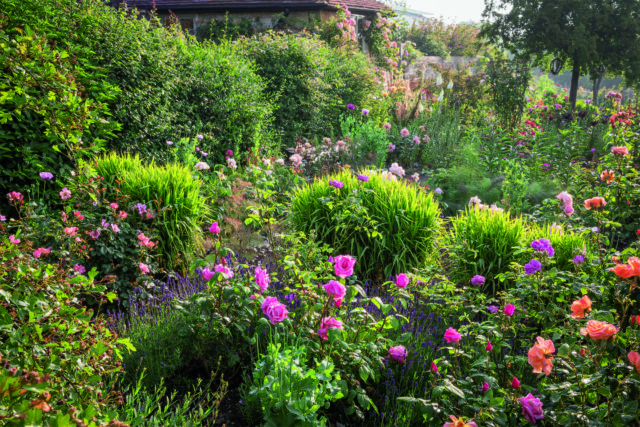 Erin: You have multiple talents, having studied history then trained as a doctor, hosted your own television program, written many books, taught gardening and cooking, and of course operating an internationally known business. What led you to really focus on gardening?
Erin: You have multiple talents, having studied history then trained as a doctor, hosted your own television program, written many books, taught gardening and cooking, and of course operating an internationally known business. What led you to really focus on gardening?
It’s growing stuff, rather than gardening, which is my passion. My garden is my shop, stocked with as many of my favourite food and flowers as I can grow easily here. I love the process of selection, and then growing things from seed — it’s optimistic, future-looking, and almost always rewarding, and all the more so if you trial the things carefully over the years as we have, so you know the time you spend is going to produce exactly what you want.
Then I love watching the seedlings settle in after planting, growing week by week, with every 52 weeks offering something different if you really look, even the winter. That’s what growing does, gets you out there every day — and as you do, you’ll see things come and others go over. I love noticing that seasonal shift from one week and bout of weather to the next.
And of course, I love the harvest, picking food and flowers from outside my door. I love cooking too, but as I get older and the family has mainly dispersed, I’m less interested in day-to-day food.
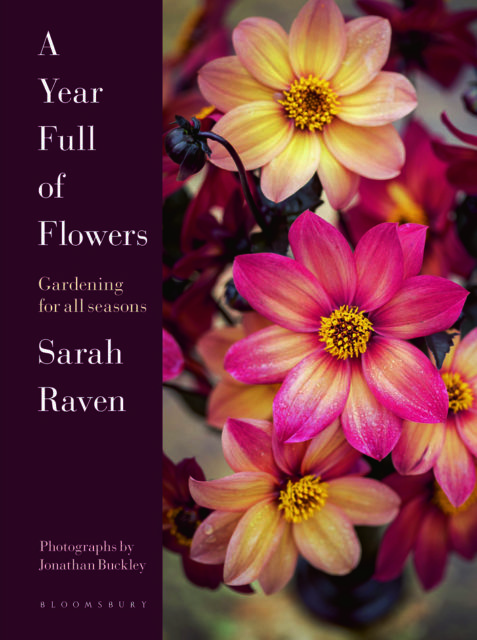 Erin: Please tell our readers about your new book, A Year Full of Flowers, and the process of putting it together.
Erin: Please tell our readers about your new book, A Year Full of Flowers, and the process of putting it together.
I love teaching, using photographs of the garden Jonathan Buckley and I have collected over 25 years, to show people what you can do with a plot of even the heaviest Wealden clay. That is what we started with at Perch Hill. I love seeing that spark in someone’s eyes that they’ve suddenly clocked into the whole gardening malarkey — how creative, how rewarding, how much fun it can be.
With lockdown preventing me doing face-to-face teaching, I really want to carry on showing people the best plants I’ve come across in our trials over the last couple of decades, moving through the year to show what we can all have out there. I don’t like tricky, stamp-collector plants. They’ve got to be easy to look after.
And as well as showing what I think are the best, through the year, I want to teach people the quickest and easiest ways to grow the plants we have here, what our main tasks are month by month.
So that’s what the book does, with 10 chapters. January/February and November/December are blocked together, but all the other months have a chapter to themselves. And in each chapter, there are my favourite plants for that moment to start each section, moving on to the jobs we’re doing to grow all the plants included in the book.
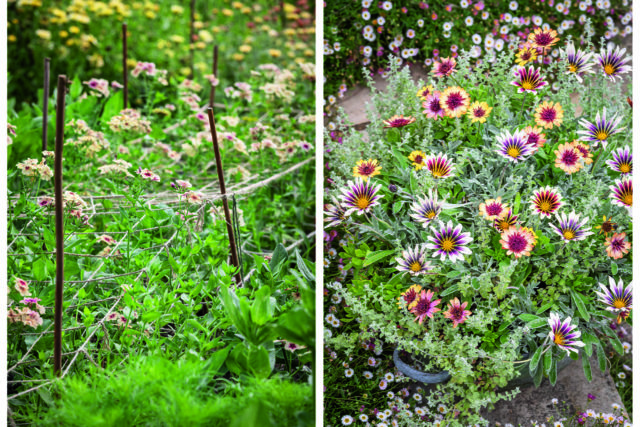 Erin: This is another project you’ve done with Jonathan Buckley, your longtime collaborator. I wonder if you’d talk a little about the importance of working with partners who really get your vision.
Erin: This is another project you’ve done with Jonathan Buckley, your longtime collaborator. I wonder if you’d talk a little about the importance of working with partners who really get your vision.
It’s such a privilege working with people who really know who you are, what you like, love, and want. It means you can really crack on without having to say too much and leave more time and headspace to be creative — to invent new combinations, move on to new ways of doing things and embrace new varieties.
Jonathan (@jonathanbuckleyphotography) and I have now worked together for 25 years — and on three different photographic themes — gardening, cooking, and wildflowers. They’re related but very different, and he has kind of reinvented how he photographs each, but above all I feel Jonathan has perfected a whole way of getting close-up plant portraits, so that they look glamorous and beautiful and yet are true, without nifty wide-angle lenses and pulled focus. This is one of the cornerstones of our mail-order plant and seed business. So even though our shoots are exhausting, I love them.
We now also have my friend and colleague, the florist and gardener Arthur Parkinson, helping us on all our shoots, Covid allowing, and he just knows what I want and like, so has hugely helped lighten my load.
And we wouldn’t have incredible plants and flowers to shoot without Josie Lewis, our head gardener, who leads the growing and gardening team.
My husband Adam has helped me style the whole place, much better at materials, interiors, and the organisation of space than I am—he has a brilliant eye.
We all work together really closely and have done so now for years.
Erin: You and your husband spent eight years living at Sissinghurst Castle, your husband’s family home. I wonder how that time, and your study for your book about Vita Sackville-West’s garden, inspired your own work as a garden designer and as a teacher?
I love Vita’s vision of faded grandeur, and it informs what I do every day. I love the abundance, the on-the-verge-of-chaos-but-not-quite-there-yet look she did so well, as well as the faded tapestry colours with sharp highlights of cobalt blue or brilliant turquoise.
Sissinghurst is one of the most beautiful built places in the world, I think, with the tumbling, full, romantic garden within its red brick walls, and apparently slightly softly crumbling buildings. They’re not really crumbling at all, of course, because it has been perfectly restored by the National Trust. I absolutely love visiting Sissinghurst — we share one part of the house with our extended family now — particularly when the light is fading or at first light. Then it looks its best.
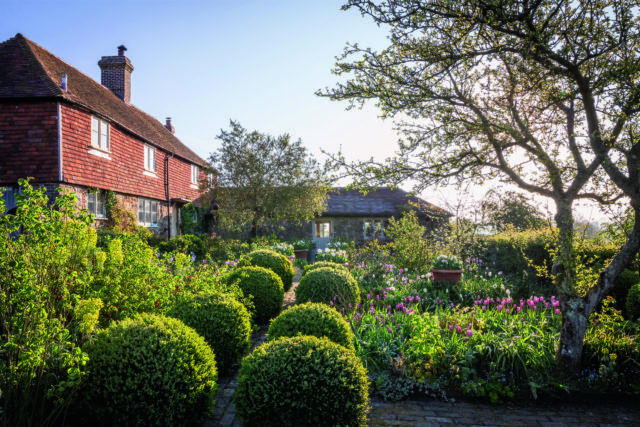 Erin: How did you choose your farm, Perch Hill, and how has your vision for its design and its function as a teaching center evolved over the past 20 years?
Erin: How did you choose your farm, Perch Hill, and how has your vision for its design and its function as a teaching center evolved over the past 20 years?
When we left London, Adam was keen to find somewhere quite near Sissinghurst, where his father Nigel lived. We came on lots of trips to look at farms, barns, and bits of land. We had a second viewing of a place up the road from Perch Hill, which was in the end too small. Adam already had three sons when we married, and we had a new baby, and much as we liked that place, there wasn’t enough room for us all. We really loved the spot it was in, very wooded and hilly with a sort of hidden, private feel. It reminded me of the valley of the Lot River (France) where I’d spent holidays. I asked the guy selling the first house where he’d go for a walk and he recommended Willingford Lane. Adam had stayed in London, so I went for a walk with the baby and saw the for sale sign on the road. That was it.
We didn’t have the money to do the place up straight away, so little by little we’ve made the garden, and restored the buildings, with only one building now left to go which we hope to do this autumn. The place has evolved with us and around what we need. Corona has changed things here — with very few courses now possible, but we open the garden and serve people lunch in an open-sided marquee on the lawn and in the barn, all pre-booked. It feels like a mini festival each time, and we all love it.
Erin: Could you talk about how your business has evolved over the years? Are there specific periods of growth or experiences, particularly recent ones, that led to key shifts that you’d like to emphasize and discuss?
My business truly is a kitchen table start-up. I took a maternity break from medicine 25 years ago and started to experiment with a childhood passion, growing flowers I could pick for the house. I chose annuals because they were cheap and easy, as well as dahlias — which were then quite tricky to find. There was very little written about growing flowers for the house then, so I started doing my own experiments, comparing square metre patches of 10 different varieties each season, and seeing how long and how much I was able to pick from each one.
This led to me writing my first book, The Cutting Garden, and then doing my first seed catalogue with 32 varieties of cut flowers. The key thing with growing a business is to recognize where your strengths and weaknesses lie, and as you can as the business grows, recruit to fill the gaps, not to double up on your skills.
Covid has been hugely challenging for us, with massive growth in our customer base and the problems with stock — and then dispatch with lack of staff through sickness or self-isolation — that goes with that, but I think we’re coming out the other end of the worst of our troubles with all of this now, and the future is exciting. We are hoping to move into glass and pottery, lovely things to live with, as well as grow.
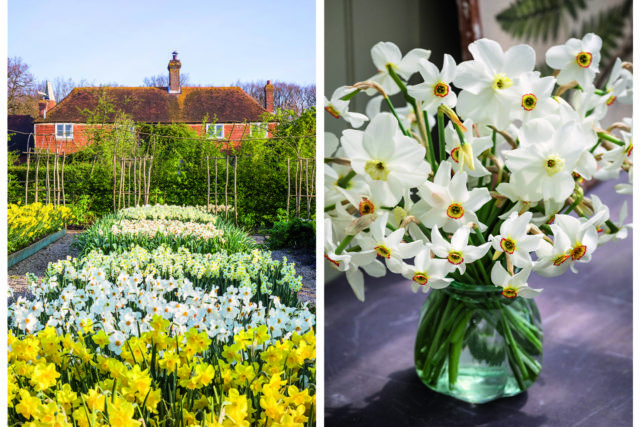 Erin: What are some of the flower varieties you’ve recently trialed at Perch Hill that you’re excited about?
Erin: What are some of the flower varieties you’ve recently trialed at Perch Hill that you’re excited about?
I never tire of our ever-expanding range of dahlias. We are involved with both tulip and dahlia breeding programmes now and selecting ones that we — and we think our customers — will love, but it’s been so exasperating not being able to travel. I love and am inspired by trips to the trial fields, mainly in Holland, that I go on with my business partner, Lou Farman, in spring and early autumn. I hope for those again this year.
I’m also excited about chrysanths, ones that we can ideally pick from outside right into November.
We did a big nerine trial here this year, new varieties which you can plant straight into the ground and which flower their first year. That’s exciting.
Erin: I know color and scent are super-important to you and that you emphasize these characteristics in flowers for gardens. What are some of the flowers you find people are most excited about right now?
The annual phloxes are huge at the moment — and rightly so. If well-grown, up through double layers of jute netting, we find these brilliant here.
Roses are increasingly fashionable too, particularly the not just pinks, but the richly scented and coloured forms and the washed-out oyster colours and browns.
I’ve grown groves of sweet peas here for years, and the tall-stemmed floristry varieties, which have a less powerful scent, are all the rage. I still love the less showy but massively perfumed ones such as ‘Matucana’, and that’s our best-seller.
Erin: Who are some of the floral artists and gardeners you are following?
I sat in on a web conference last weekend of the European Association for Flower Growers (@euflowergrowers). That was fun to come across: meet, be taught, and shown farms by growers from not just the U.K., but the USA, Chile, Spain, Belgium, and Holland. It was very confirming hearing what flower growers such as Anna Jane (@littlestateflowercompany) and Krishana Collins (@tealanefarm) had to say. Krishana has done lots of experimenting with postharvest conditioning, and even though I’d never heard of her before, we had concluded just the same.
I also love the no-nonsense teaching style of the three U.K. flower farmers, Rachel Siegfried (@gandgorgeousflowers), Cel Roberston (@forevergreenflowerco), and Roz Chandler (@fieldgateflowers). They all gave inspiring talks last weekend.
Here, at the moment, I particularly love Anna Potter’s (@swallowsanddamsons) arranging style. And I adore the crazy abundance of Arthur Parkinson’s arrangements, which he does on a weekly basis here when the garden is open. They often stand 5 foot tall.
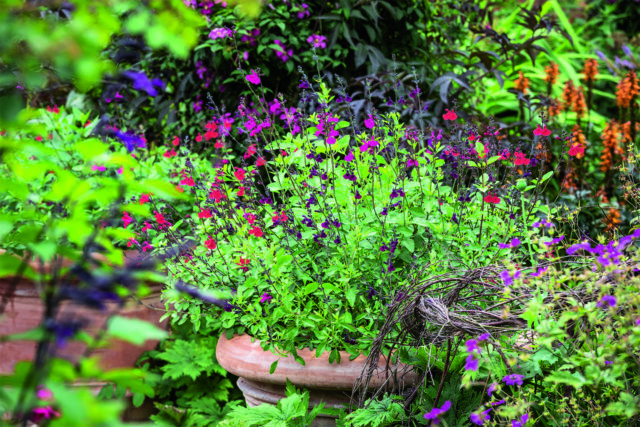 Erin: We hear from so many people who are just getting started with growing flowers and with gardening in general. Do you see the trend toward buying local flowers and growing flowers in gardens continuing to go up in the U.K.?
Erin: We hear from so many people who are just getting started with growing flowers and with gardening in general. Do you see the trend toward buying local flowers and growing flowers in gardens continuing to go up in the U.K.?
Yes, yes, and yes. This has changed totally since I started 25 years ago. Then everyone thought home-grown or local flowers wouldn’t last, that things such as cosmos, love-in-the-mist, cornflowers were not substantial enough and would be over in a trice. It’s true, annuals don’t last as long as lilies, but if you can get them grown locally outside, not flown or trucked in from thousands of miles away, that doesn’t matter. People are increasingly treasuring their delicate beauty and garden style, not polytunnel/monocultural style.
Erin: What advice would you have for someone starting a flower garden for the first time?
Choose annuals which are cut-and-come-again. You’ve only then invested in a few packets of seed — and with these long-cropping plants (such as cosmos, zinnias, and sweet peas) combined with a good range of shapes and colours of dahlias, you’ll have an easy flower shop outside your door. The more you pick, the more they flower. It’s an ever-filling cup, easy to do, and hugely rewarding.
If you have the time and room, to these, I’d add a handful of your favourite coloured tulips and a few long-season roses with good vase lives.
Erin: What are you excited about and inspired by these days, and what new projects do you have on the horizon?
I want to do more and more writing, recording the trials of the edibles as well as the flowers we’ve grown here over years, so that’s my next project — which I’m working on now — writing A Year Full of Vegetables.
I also enjoy telling the stories of what we do here, with little films and daily posts on social media, and Arthur and I are just launching a podcast of our favourite plants we’re sowing or are flowering that exact week.
Our third lockdown has been hard for everyone in the U.K. because it’s winter — grey, wet, and pretty gloomy here in Sussex. One of the optimistic things I’ve been enjoying is posting (@sarahravenperchhill) a photograph of a bunch or mini vase of flowers I’ve picked — from the greenhouse or garden — every day since January first. I’m going to try to keep going till we’re let out!
Erin: I love this photo series, Sarah, and I’ve enjoyed this interview immensely. I can’t thank you enough for so generously sharing your knowledge and experience with Floret readers.
To celebrate the release of Sarah’s new book, A Year Full of Flowers: Gardening for All Seasons, we’re giving away 5 copies. To enter, leave a comment below. In your comment, tell us what plant you’re loving most in your garden or neighborhood right now. Winners will be announced on Friday, July 23.
Please note: If your comment doesn’t show up right away, sit tight; we have a spam filter that requires we approve comments before they are published.
Learn more and connect with Sarah:
A Year Full of Flowers: Gardening for All Seasons by Sarah Raven (Bloomsbury) with photography by Jonathan Buckley
Sarah’s new podcast: “Grow, Cook, Eat, Arrange” with Arthur Parkinson.
Website: www.sarahraven.com
Instagram: @sarahravenperchhill
Photos © Jonathan Buckley
Congratulations to our winners: Caitlin Richardson, Patricia Clark, Debbie Piper, Sara and Marcia Pangburn

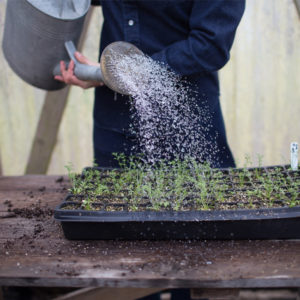

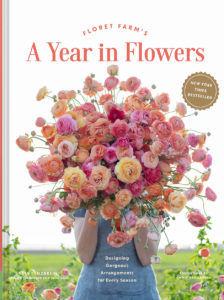
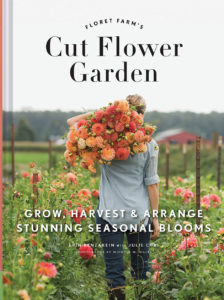


Allison Currah on
I am enjoying my David Austin roses that I bought earlier this year I took a chance, looking for something cream, they are shades of pink yellow and apricot ending with pretty pink spotting that gives a wild vintage look. Lovely with other roses in ice cream colours, romantic with hydrangeas and philadelphus, no, the Philadelphus were the best flowers this year with their heavenly scent, no I cannot choose, it is the combination of scents, colours textures and shapes that is so delicious in a garden and bouquet.